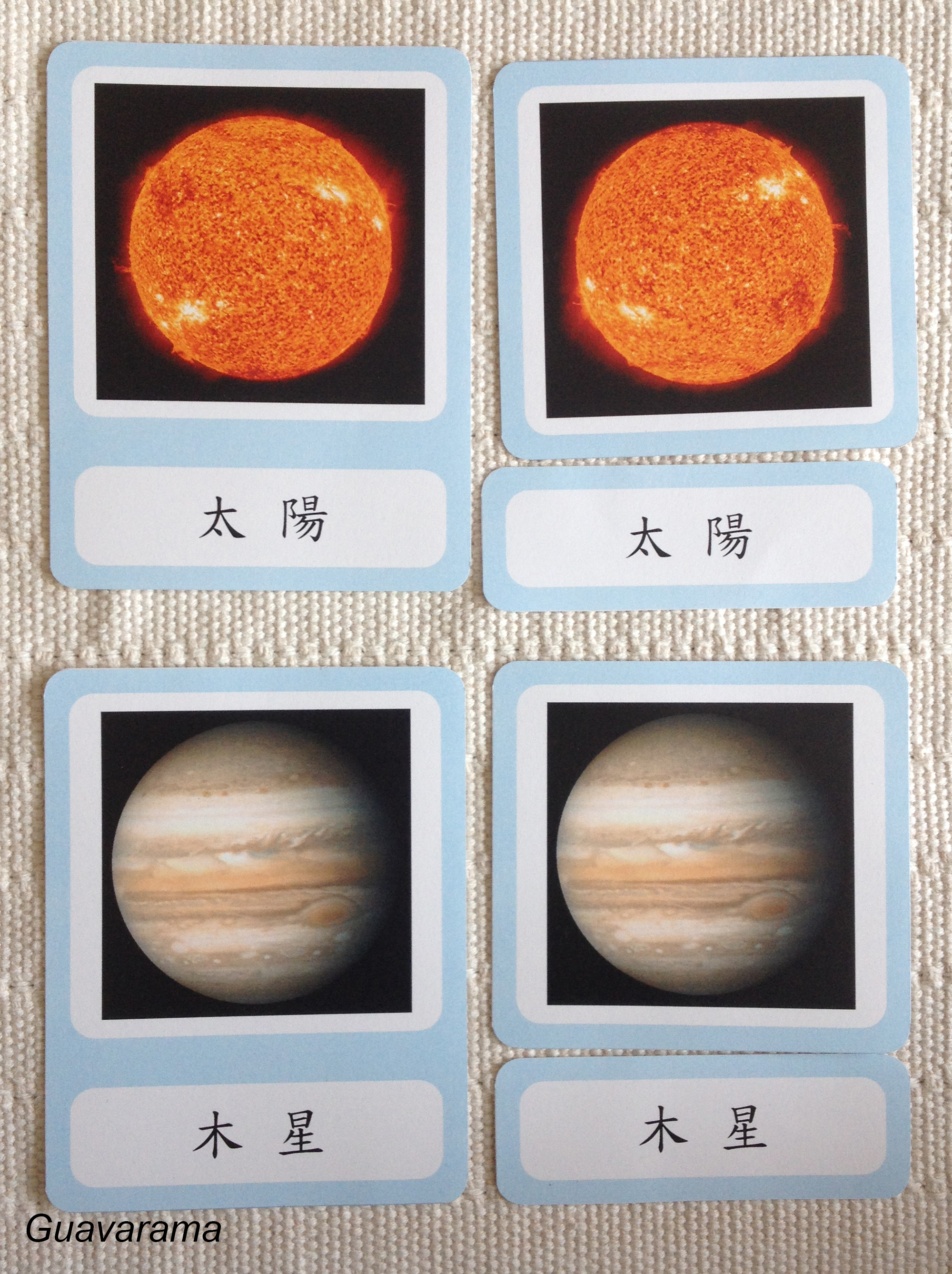After 2 days of looking through the 3000 characters, I decided to switch course and start on my solar system nomenclature cards. I just kept thinking that we ought to be learning nomenclature through actual learning of knowledge rather than reading. But, I do know exactly how I am going to choose the next 100 words. I just need to actually choose them and then make up sentences.
I’ve been torn about nomenclature. Many teachers tell me their kids don’t actually like doing them past 1st grade. But it IS the thing made most often and sold online. It’s easy to make and concrete. But I want those concrete use of vocabulary. Also, why make cards if the kids can just get their information in little books I find for them? But recently I’ve been going on and on about the importance of using your hands to learn. And nomenclature cards will do that since the kids are moving cards around to match.
Nomenclature cards?
In primary, nomenclature cards are also called 3-part cards. There is the control-of-error card, which has a picture and then the word. That card is “cut” up into 2 cards so the kids can match it to the master card. The kids are not expected to read the words, it’s a matching game.
In elementary, this gets extended into an additional card which has the definitions of the words. Before the child can read, the teacher reads the definitions during the presentation. There is also the master booklet, which again provides a control of error. It is how you don’t have to do the activity with the child after presentation. They check to see if they match things right themselves. If they can read, they can now do this matching. It is supposedly also what you do first, reading the booklet with the child. But in training, they have never presented it this way to us. So I’m not sure.
One thing I realized in thinking about nomenclature cards again is how short the information is. It’s not there to teach everything. It’s there to invoke the child’s interest in said subject so that they want to learn more and research it themselves. On top of that, because the information is short, it is easier for the lower elementary child to read. They don’t necessarily have to find all that information in a huge encyclopedia. I know for sure Thumper hates that, reading tiny fonts in books. That’s yet another reason I decided to go ahead with making these cards.
Apparently a second level of difficulty for elementary children is to cut up these sentences. I guess it is a good grammar exercise and makes you think about what you’re reading. We’re not there yet.
Solar System Cards
When I was making cards for my school, I railed against bilingual cards. If a child is stronger in English, then they will cheat by reading the English when matching. However, in presenting at home, I realized that I had a problem now, I don’t know the words in Chinese! I couldn’t present them myself when we get to the definition part.
So here’s my version, which will allow both Elementary and Primary to use since I’m way too lazy to make a second set for Astroboy.
Primary Nomenclature

The primary nomenclature will have:
- Master card,
- Picture
- Label, Chinese only
- Optional English label in cursive (I didn’t take a pic of that)
I could have made a master card that has both cursive English and Chinese in it but that is just way too many versions to keep track of. It would also be confusing in the classroom for us.
Elementary Nomenclature
The elementary nomenclature will have:

- Booklet with master card and master definition. The master card is bilingual.
- Picture
- Label, Chinese only
- Label, English in print
- Definition, Chinese only, with zhuyin
- Definition, Chinese only, label word missing, with zhuyin (no picture)
For elementary, given that Thumper is bilingual, I added the English into the booklet. But I didn’t put them together in the label part because I wanted her to think about the translation other than just read them together in one label card. I also added the a second definition card, with the main vocabulary word missing so they can guess. Again something I’m not seeing in ETC Montessori or Montessori Research and Development. But I saw it in training. It’s a good way to really make the kids recall their knowledge. This can be used in lieu of the definition card with the vocabulary word written in. It could be the higher level of difficulty.
I accidentally printed my cards out before I made one more change. When I visited a school in Taiwan, I saw how the teachers were making cards where the zhuyin is selective. They told me that the children were using zhuyin as a crutch. I plan to make all the first 500 Sagebook words to be without zhuyin. And if I can figure it out, actually make the zhuyin go left to right instead of top to bottom. This helps the eyes track when they read.
I’m theorizing that having to read the cards carefully, and having to think while she matches, having to use her hands while learning, Thumper will really learn her solar systems. When she did her glue and paste of the solar system chart 2 weeks ago for fun, she didn’t recognize her planets anymore even though I know she learned it in primary.
But for now, these cards will do. Spent all morning cutting. Now off to laminate!
How did you make these cards? With what program? Would you be interested in selling the actual cards, or pdfs or jpegs that I can assemble myself? They are so pretty.